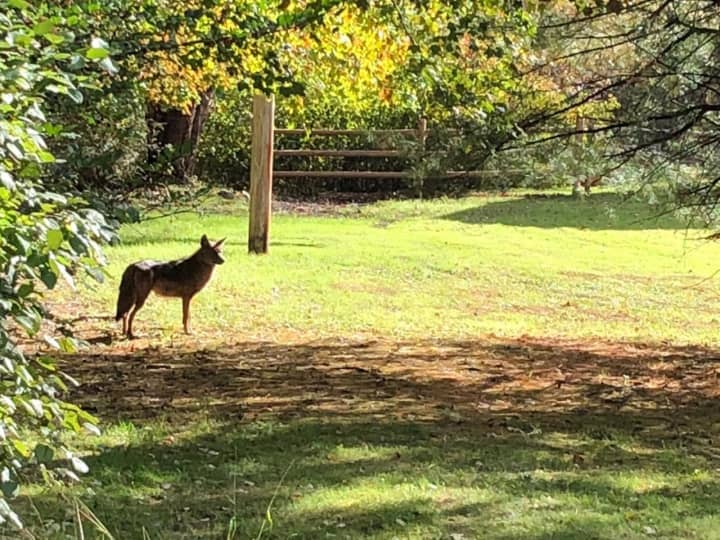The duo were out and about in a West Somers Park neighborhood.
The sightings follow several others throughout Westchester in recent weeks, including several others in New Rochelle, Greenburgh, Eastchester, Mount Pleasant, Chappaqua, Pleasantville, Putnam, Dutchess and Rockland counties.
According to the DEC, “coyotes are well adapted to suburban and even some urban environments, but for the most part they will avoid contact with people.
“However, conflicts with people and pets may result as coyotes tend to be territorial around den sites during the spring through mid-summer period as they forage almost constantly to provide food for their young.”
"Coyotes are an integral part of our natural ecosystem and provide many benefits to New Yorkers, but can cause conflicts if they become accustomed to human interaction and food sources," DEC Commissioner Basil Seggos stated. "We strongly encourage all New Yorkers to do their part and follow our common sense tips to ensure coyotes remain wary of people and minimize the chance of conflicts.”
The Humane Society of the United States notes that residents who may spot a coyote in the area should "relax."
"If you spot a coyote in your neighborhood, relax: Most coyotes avoid people. Seeing a coyote out during the day is not a cause for alarm, especially in the spring and summer when they’re looking for food for their pups,” Lynsey White Dasher, HSUS director of humane wildlife conflict resolution, said. "Coyotes may mistake small, unattended pets as prey or attack large dogs they view as threats to territory or dens.
"If a coyote displays no fear of people, he’s probably been fed. You can re-instill his fear by raising your arms and yelling to drive him away. This is called hazing. Unlike trapping, which sometimes catches pets or other wildlife but rarely the coyotes who are causing problems, hazing works."
Click here to follow Daily Voice Armonk and receive free news updates.



